







The Camino de Santiago
Rabanal to Santiago de Compostela
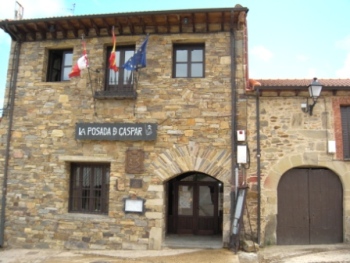 |
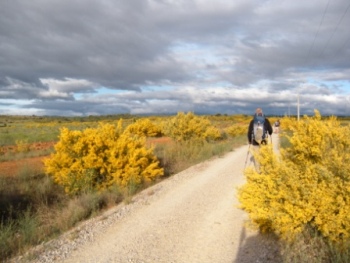 |
|
| We were on a slow climb as we left Astorga and headed for the Cantabrian mountains. Not only the terrain, but the arquitecture was changing; and our inn was typical of the stone buildings we began to see. |
My favorite hiking day of the entire Camino was the day we left Rabanal del Camino and climbed nearly 500 m. through the most beautiful landscape of flowering spring shrubs. |
|
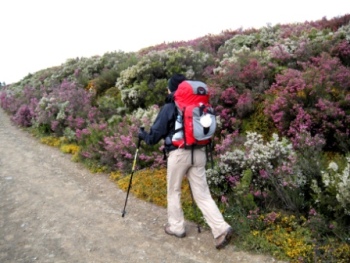 |
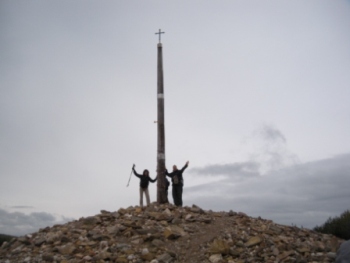 |
|
| It seemed like every slope wanted to vie with another for the most color and variety. We were truly walking in God's Rock Garden. | When we reached the Cruz de Ferro (the highest point on the Camino, at 1,505 m.), we knew that we would be able to finish. We followed a Pilgrim tradition when we each placed a stone, that we had carried with us from our Hot Springs property, at the foot of the cross. | |
 |
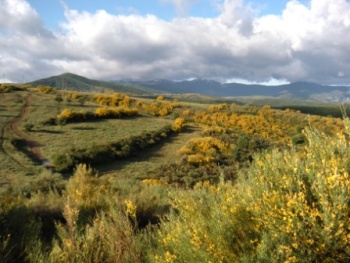 |
|
| After that, the day just continued to be great as we entered the Manjarin forest. . | and continued on the up and down trails with snow-capped mountains in the background. |
|
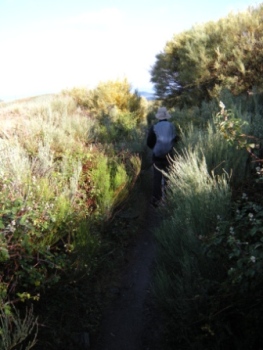 |
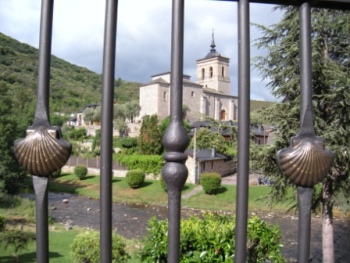 |
|
| Some of the trails were so narrow, we weren't sure if we were on a cow path or the Camino. Then we'd see some cow pies and would know we were sharing the same trail. | The cities along the Camino were proud to be part of the historic route, and displayed shells and other symbols of the Way to St. James. | |
 |
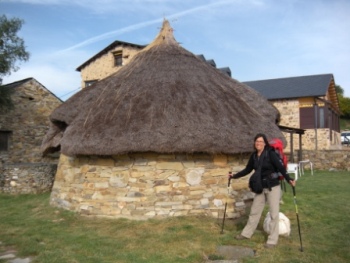 |
|
| The Bierzo Valley was full of cherry trees with ripe fruit draping over our path. YUM! | We started seeing pallozas (straw-covered huts) when we reached the last province of the Camino - Galicia. | |
 |
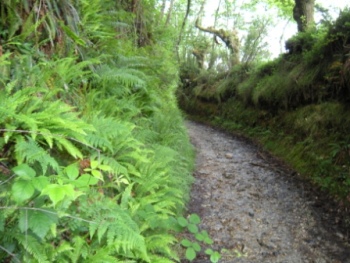 |
|
| The views at O Cebreiro seemed to go on forever. | It rains a lot in Galicia and we were almost always on wet paths. |
|
 |
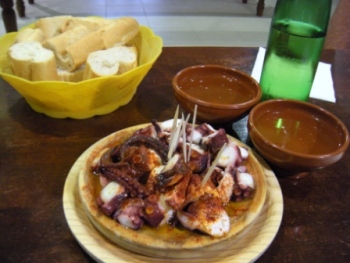 |
|
| Sometimes we walked through stream beds. | Octopus is a popular dish, and we drank the local white Ribeiro wine from wide clay mugs. | |
 |
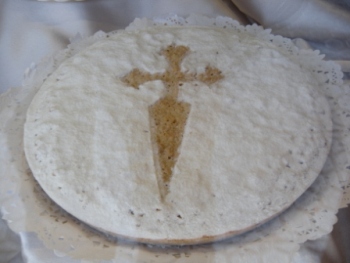 |
|
| The village of Arzúa produces a soft round cheese that we loved. The tetilla cheese (that looks like Hersheys kisses) is popular all over Galicia. | Tarta de Santiago is the most famous dessert and the Cross of St. James is shown on each one. | |
 |
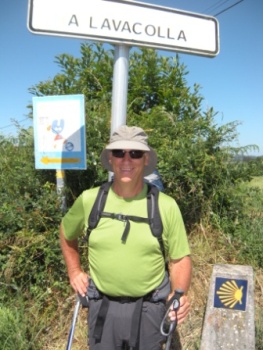 |
|
| We got more and more excited as we watched the Camino markers tell us how much farther it was to Santiago de Compostela. |
Paul had to get his picture taken at Lavacolla (the name means "scrotum wash"). This town was traditionally the place where the men would "clean up" before entering the Cathedral of Santiago - 10 km. away. | |
 |
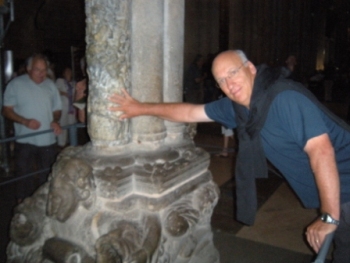 |
|
| As we entered Santiago, we had mixed feelings. We were thrilled that we had arrived; but we had enjoyed the Camino so much that we hated to see it end. | After going to the Pilgrim's Office to get our "Compostela"; we went into the Cathedral to touch the post of the Tree of Jesse, that thousands of other pilgrims have touched to show thanks for their safe arrival and their unity with Jesus Christ.. |
|
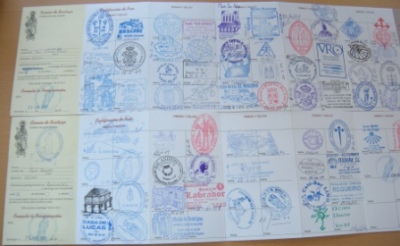 |
||
| These are our Credentials. Each stamp shows the place and date. The Pilgrim's Office verifies that you continued on the Way and completed at least 100 km. |
||
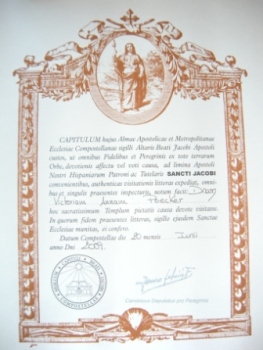 |
||
| The Compostela is a certificate that states that you have met the requirements of the pilgrimage and you have made a commitment with God to help Him build His Kingdom. |
||
 |
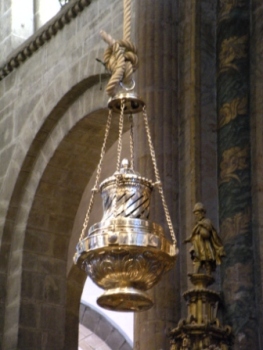 |
|
| We sat on the floor at the Pilgrim's Mass the next day at noon. The nationality of each pilgrim that had received a Compostela the day before, along with the place they began the Camino, was announced. We were the only two from the USA. | The largest botafumeiro (a huge incense burner) in Spain was swung back and forth during the mass. Traditionally, it was used to kill the stench from the body odor of all the pilgrims. The place was packed when we were there, so it was probably a good idea. |
|
 |
 |
|
| The tomb of St. James is located under the main altar. | Above the Cathedral door is an engraving showing the cross of Christ with the Greek symbols for the Alpha & Omega reversed. Normally, they symbolize Christ as the Beginning and the End. Here they are reversed to show that for us as Pilgrims, we have finished walking the Way of St. James; but now we will begin our New Camino |
|
| Read our BLAB to learn more about the end of our Camino Adventure. | ||